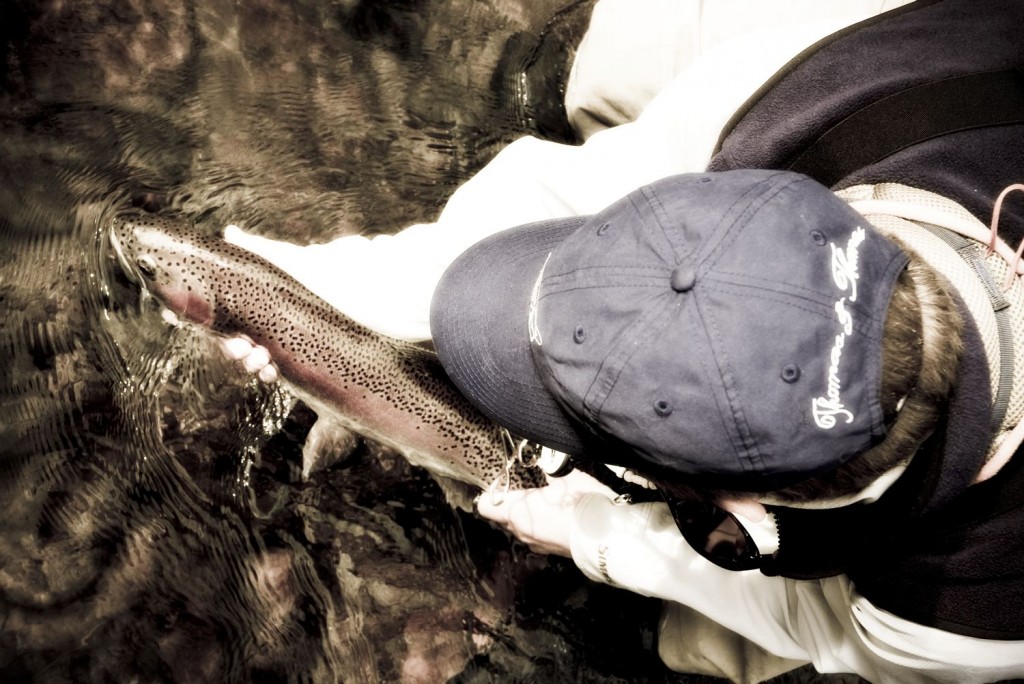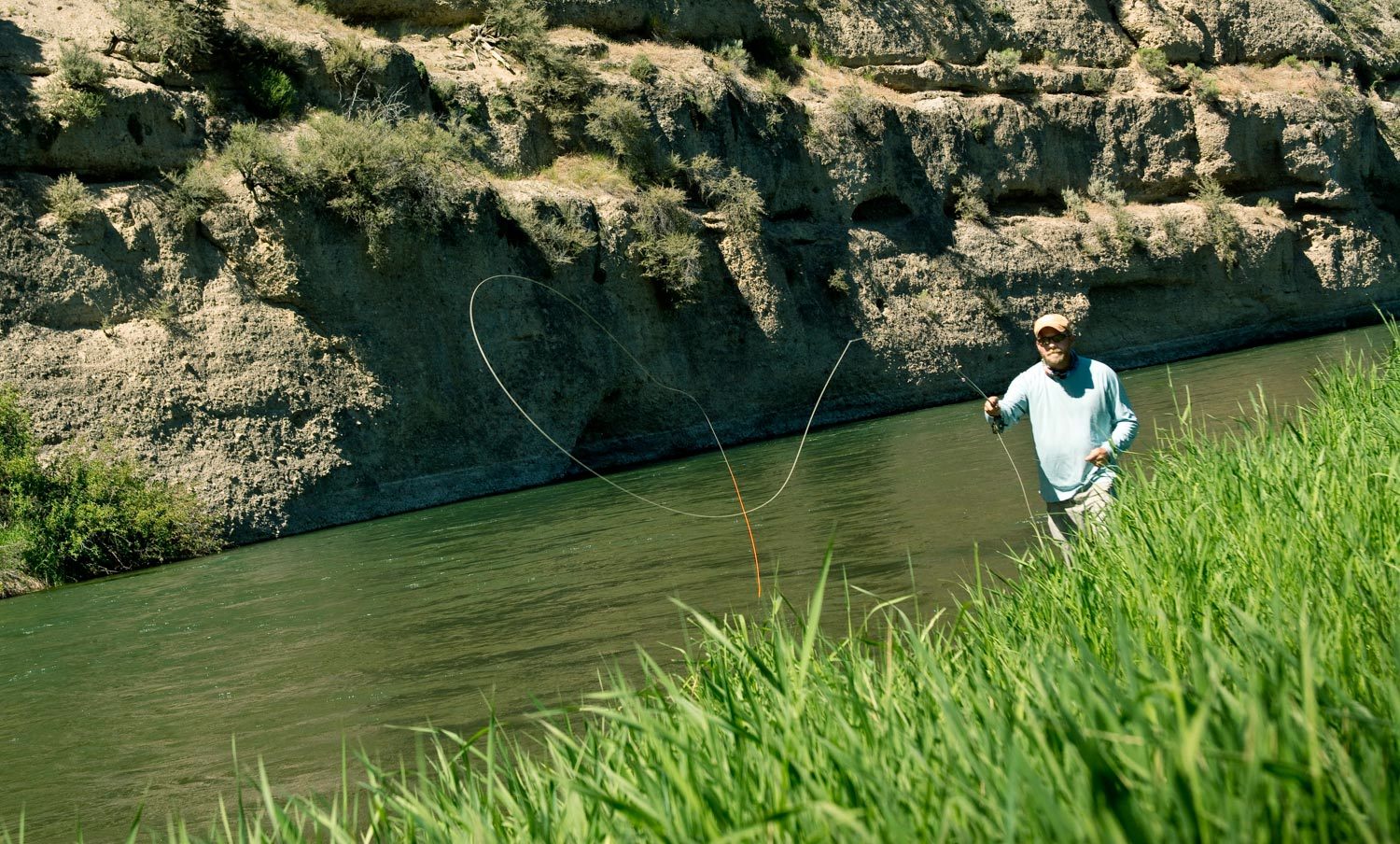You’ve just spotted a big head break the surface on the far bank, gulping down a struggling mayfly drifting in the foam.
The excitement of discovering the trophy trout feeding triggers your body’s adrenaline glands, and almost instantly, you feel your heart begin to pound, thump thump….thump thump. With the confined quarters and lacking room for a back cast, you realize your only viable option to reach the fish is going to be with an accurate roll cast. As you quickly try to present your mayfly imitation in the feeding lane, hoping that the big fish will mistake it for a natural, your fly shoots left of your intended target and lands in an overhanging branch above the fish’s lie, immediately putting down the big fish. With the fishing opportunity blown and the disappointment setting in, you find yourself asking, “What did I do wrong?”
As an avid small stream trout fisherman, I’ve lived out this exact situation many times, and felt the disappointment followed by a poorly executed roll cast. It wasn’t until I took the time to understand and learn the mechanics of proper roll casting, that I began finding myself capitalizing on fishing situations that called for precise roll casting. Looking back now on my past roll casting insufficiency, it’s clear I wasn’t at all, alone. There’s many anglers that struggle with roll casting, and that’s why I’ve decided to provide a short list of tips that’s intended to get anglers roll casting like pros.
4 Tips to get you roll casting like a professional
Tip 1. Smoothly skate or ski your fly across the surface of the water all the way to your anchor point.
The key to a good roll cast, first starts by always staying in complete control of your fly line, leader and fly throughout your entire roll cast. Always make sure your fly stays on the waters surface and moves steadily in a straight line all the way to your anchor point. This will help you create a nice D-loop and will provide sufficient fly line to grab tension on the water’s surface so you can adequately load (bend) your rod and generate the line speed needed during your roll cast.
Tip 2. Anglers roll casting should always anchor their flies as close to their left/right side as possible.
One of the most common mistakes I see anglers making in their roll casting is not bringing their flies back to their body (side) close enough before they begin their forward cast. This is equally important whether you’re making a roll cast on your dominant side or an off-shoulder roll cast on your non-dominant side. Not doing so, you’ll drastically be hindering your accuracy and you won’t create a big enough D-loop capable of adaquately loading your fly rod. If you’re anchor point is too far from your side when you begin your forward cast, your presentation will be pushed significantly to the right or left of your intended target every time. Warning: If your anchor point in front of you instead of off to your side, you may end up hooking yourself when the fly leaves its anchor point.
Tip 3. Once your fly reaches your anchor point your rod needs to come to a complete stop.
Another catastrophic mistake anglers make roll casting is they don’t come to a complete stop when the fly reaches their anchor point. Failing to do this, will not allow your fly line to grab tension on the water’s surface, and you won’t be able to load your rod sufficiently. Be careful though, if you’re fishing weighted flies and pause too long, they’ll sink too deep and you won’t be able to pull the flies to the surface during your forward cast. This usually results in a collapsed roll cast that doesn’t reach your target.
Tip 4. Smoothly Accelerate Your Rod and Don’t Drop Your Rod Tip to the Water
In roll casting, it’s important to remember that you only have a forward cast to make your cast. Since you don’t have the luxury of a strong back cast when you’re roll casting, you need to make sure you’re forward cast has good form and is efficient. Concentrate on smoothly accelerating your rod in a straight line path, and abruptly stopping your rod at it’s fastest point in the 2 o’clock position. This will put maximum bend in your rod and provide you the power needed to pull off a powerful roll cast that straightens out the leader and is accurate. If you finish your roll cast with your rod tip too close to the water’s surface, you’ve probably moved your rod tip in a convex path instead of a straight line path. This will open your casting loop, decrease line speed, and your fly line and leader usually will pile up short of your target.

Roll Casting is a casting technique every fly angler should become well versed. Photo By: Louis Cahill
I hope everyone finds these roll casting tips helpful. Please feel free to share with anyone you think would benefit from the information. Keep it Reel,
Kent Klewein Gink & Gasoline www.ginkandgasoline.com hookups@ginkandgasoline.com Sign Up For Our Weekly Newsletter!


Thanks. Good stuff.
A single handed spey will also work . It may allow someone, not so confident in the strength of there roll cast, to bomb one out to the other side if there is little in the way of back cast real estate.
Nice. Thanks for the pointers.
Nice summary! I taught a beginner’s casting course Saturday, and will forward your article to the participants.
thanks
al
Thx for the suggestion